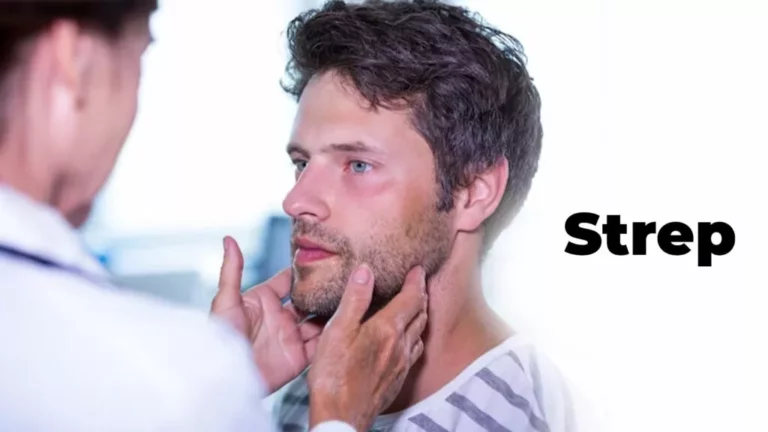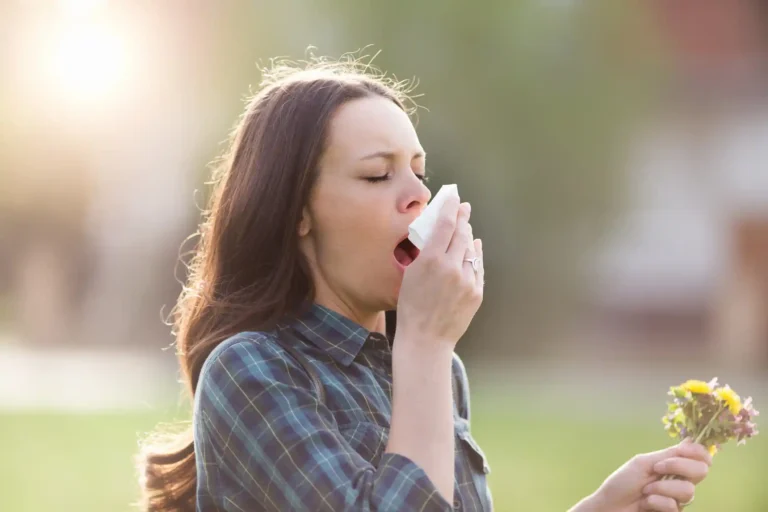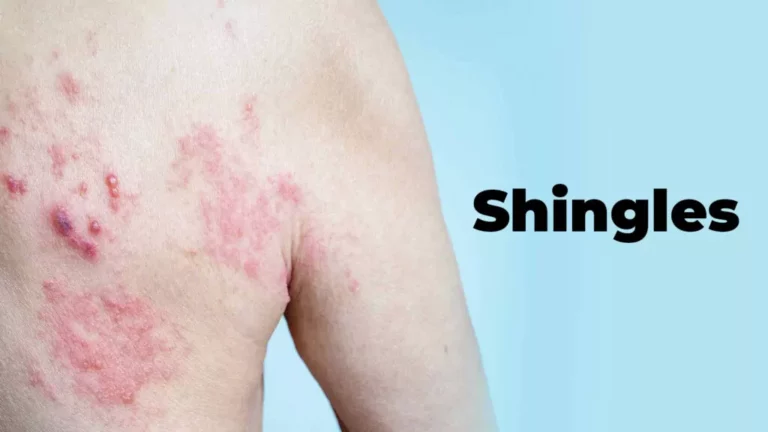People often have small bumps or thickened skin on their feet. This skin may be a growth called a callus or wart. They can look very similar and are easy to confuse.
A plantar wart is a small growth caused by the human papillomavirus (HPV). Plantar warts are located solely on the bottom of the foot. The virus enters through very small breaks or weaknesses in the skin. A wart that is formed from a virus may be rough, and sometimes there can be small black dots present in the center.
A callus is not a virus. A callus forms when the skin becomes thick due to excessive rubbing or pressure. People may have a callus on their heel, on their toes, or on the ball of their foot. The skin feels hard and dry and may look yellowish.
Both a plantar wart and a callus can be painful while walking or standing for a long time. Understanding these key differences can help you take better care of your feet and keep them healthy.
This article explains how to tell the difference between a plantar callus vs plantar wart. You’ll also learn what causes them and the best ways to treat and prevent them. Knowing the differences can help you take care of your feet and keep them healthy.
What Causes Plantar Wart and Callus
Plantar warts are formed due to the virus known as HPV (human papillomavirus). This virus enters through small cuts or weak spots on your feet. It spreads easily in warm, damp places like pools, showers, and locker roomsWalking barefoot in these areas increases the chance of getting the virus.
Callus, however, is not viral. Instead, a callus develops when your skin attempts to protect itself from too much pressure or rubbing.
For example, wearing too tight or high heeled shoes can cause calluses. A callus can develop by standing or walking on your feet for extended hours every day as well.
Individuals who walk barefoot often, have foot deformities, or wear ill-fitting shoes are more likely to develop calluses or warts. Keeping your feet clean, dry, and protected helps to minimize both conditions.
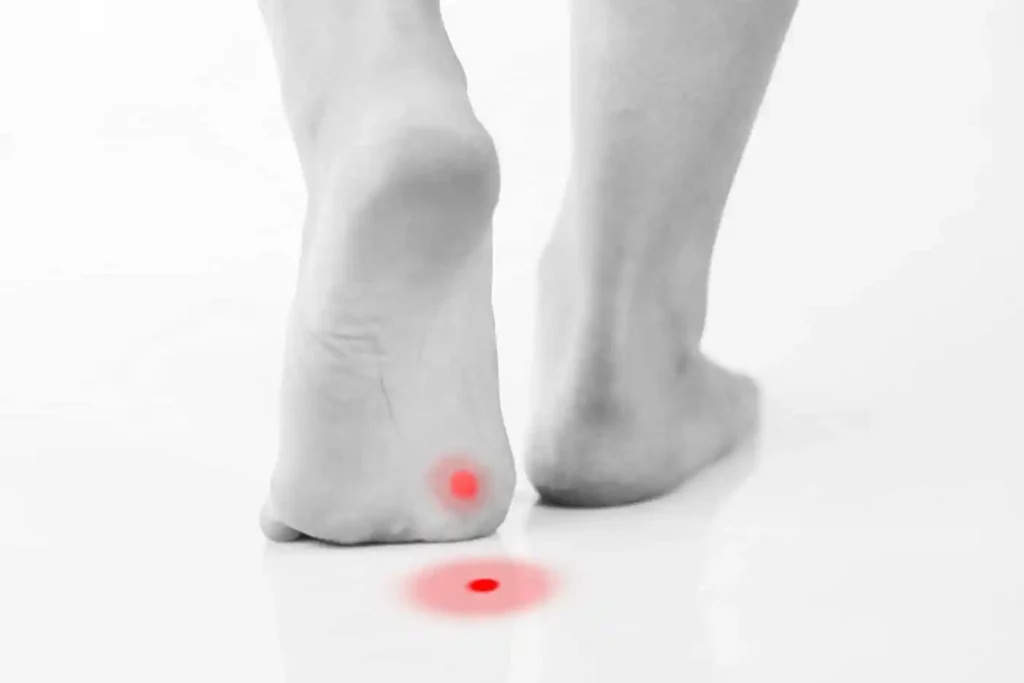
How to Tell the Difference Between Plantar Walt vs Callus
Determining whether your condition is a callus vs plantar wart can be confusing, but some indicators can help distinguish the two. Below are ways to identify the difference simply.
1. Look
In comparing plantar callus to plantar warts, the appearance will be one of the main clues.
A plantar wart may present with small black dots in the middle of the wart. The small dots are clotted blood vessels. A plantar wart can feel rough to the touch and shaggy or grainy in appearance.
A plantar callus will be smooth to the touch and thick and yellow or grey in color. There will not be black dots. Calluses will have even, rounded edges.
2. Pain
Pain is one of the easiest differentiations between a plantar wart and a callus.
A plantar wart feels sharp or sore if you squeeze it from the sides. This has to do with the wart growing inwards into the skin, which presses on sensitive tissue underneath. Even a small wart can have increased pain when walking or standing.
A callus will generally feel different. Generally, it only hurts if you press directly down onto it. The pain is more dull and spread out, because your body’s thick skin is pressing against layers of tissue deeper to the skin. This pain usually comes about after standing for a long time or wearing tight shoes.
If it hurts when you squeeze the sides, it is likely a plantar wart. If it hurts when you press it straight down, it is probably a callus.
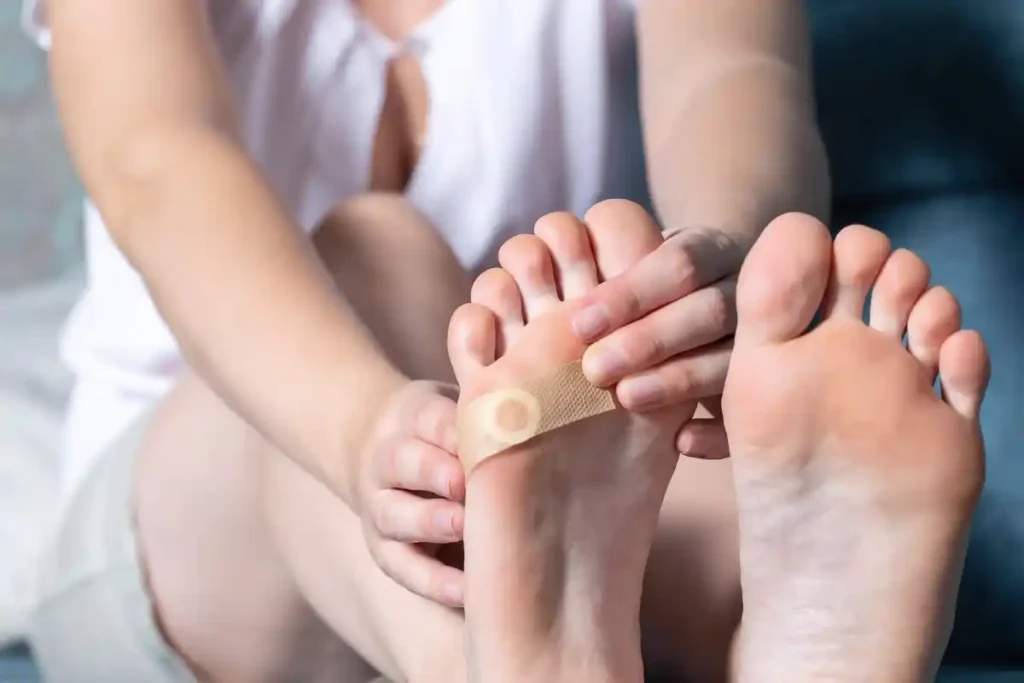
Texture and Skin Lines
A simple visual test to help determine whether you have a plantar callus vs a plantar wart is to examine the skin lines. Here’s what to look for:
- Plantar warts break or disrupt the normal skin lines of your foot.
- The surface of a wart may appear rough, bumpy, or grainy.
- You may observe small black dots called blood vessels that have clotted.
- Calluses retain the cursive, natural skin lines, though it is thick and hard.
- The surface of a callus is smooth and even, and does not have black dots.
- Calluses often feel dry or waxy relative to the surrounding skin.
Treatment Alternatives
There are safe and effective treatments at home or the doctor’s office for treating both plantar warts and calluses. The appropriate treatment depends on the nature and severity of the condition.
For Plantar Warts
Often, plantar warts will resolve on their own, though that can take months. To expedite their resolution, consider:
- Over-the-counter topical creams or pads with salicylic acid that will gradually remove wart incrementally.
- Freezing (cryotherapy) in the office or at home to kill wart tissue.
- Laser Wart Removal is a brief clinic procedure that safely and painlessly removes warts in one visit.
- Visit a podiatrist if the plantar wart is large, painful, or continuing to spread. The podiatrist can offer recommendations on an appropriate treatment plan.
- During recovery, it’s important to understand the stages of a plantar wart healing. The wart usually darkens, shrinks, and flakes off as new healthy skin develops underneath.
For Calluses
Calluses usually respond well to basic home care. Reduce thickened skin and prevent discomfort by:
- Soaking feet in warm, soapy water to soften skin.
- Gently filing the callus with a pumice stone after soaking the feet.
- Using padded cushions or insoles to decrease pressure while walking.
- Wearing comfortable, wellfitting shoes to reduce rubbing and friction.
- However, if the callus is painful, cracked, or recurrent, see a podiatrist.
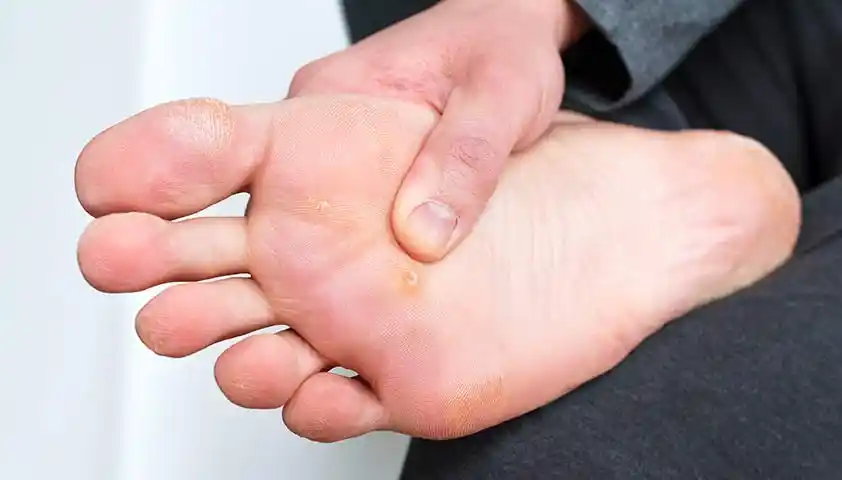
Prevention and Foot Care Tips
- Wash and dry your feet daily.
- When in locker rooms and pools, we suggest you always wear shoes or flip flops.
- Choose shoes that fit well and that do not rub or exert too much pressure where the shoe is rubbing on the foot.
- Change socks at least once per day to assure no moisture stays on the feet.
- Try not to share socks or shoe with others (including family members).
- Do inspect feet frequently for any new bumps, thick skin, or changes.
- Use a moisturizer to keep the skin soft and heel healthy.
- If you notice pain or unusual spots, see a podiatrist as soon as possible.
Conclusion
Knowing the difference between a plantar callus vs plantar wart will allow you to choose the best care and treatment for the situation. A good foot hygiene routine and attention to the initial problem will keep your feet in good health, comfortable, and take away the chance of it recurring.
Get expert foot care at Novamed today. Book your appointment with our specialists and treat plantar warts or calluses the right way!


